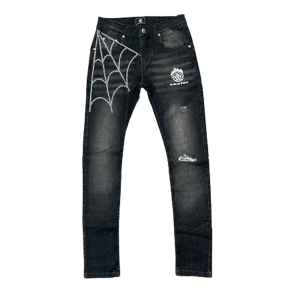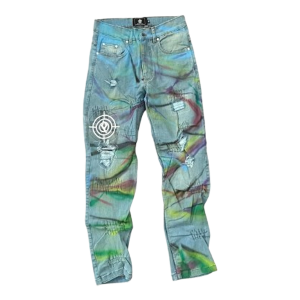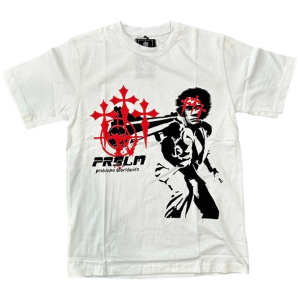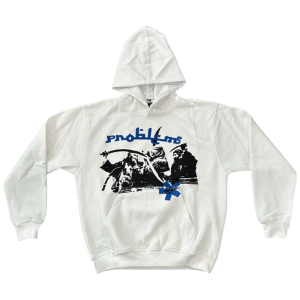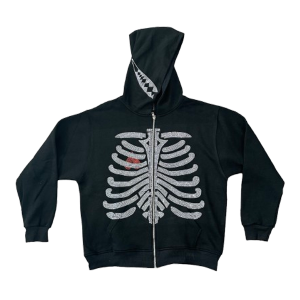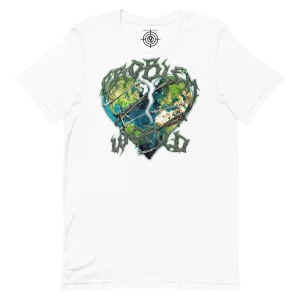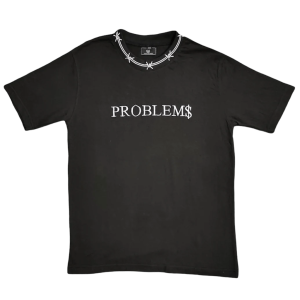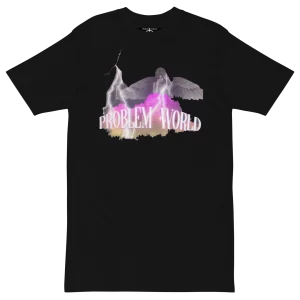If you are yet to figure out what is streetwear, then this blog is for you. Continue reading below to get familiar with what is considered streetwear. We will be going over how streetwear came in and transitioned through the years. As a result, enabling you to understand what type of fashion is streetwear.
What Is Streetwear?
Streetwear, once a niche fashion movement born from the streets and subcultures, has evolved into a global phenomenon that transcends traditional fashion boundaries. Therefore, it has roots deeply embedded in urban culture, skateboarding, hip-hop, and underground scenes. Moreover, streetwear has emerged as a dominant force in contemporary fashion.
Additionally, influencing not only what people wear but also how they express themselves and interact with the world around them. In this exploration, we delve into the multifaceted world of streetwear, tracing its origins, examining its cultural significance, and understanding its enduring appeal.
Origins and Evolution of Streetwear
Streetwear finds its roots in the urban landscapes of America during the 1980s. Since it is influenced by the DIY ethos of punk culture and the laid-back aesthetic of California skateboarding. Besides, streetwear emerged as a rebellion against the formalities of mainstream fashion.
Brands like Stussy, founded by Shawn Stussy in the early 1980s, played a pivotal role in popularizing the streetwear aesthetic. Thus, offering graphic T-shirts, hoodies, and other casual wear that resonated with the youth culture of the time.
Streetwear Back in the 1990s
As the 1990s rolled in, streetwear began to gain mainstream recognition, fueled by the rise of hip-hop music and its influence on fashion. Rappers and hip-hop artists became cultural icons, not only for their music but also for their distinctive style. Which often featured oversized clothing, baggy jeans, and flashy accessories. Brands like FUBU, founded by Daymond John in 1992, capitalized on this trend, catering specifically to the urban market. Furthermore, blurring the lines between streetwear and hip-hop culture.
The turn of the millennium saw streetwear continue to evolve, with the emergence of new brands and subcultures. Japanese street fashion, characterized by its avant-garde designs and attention to detail, exerted a significant influence on the global streetwear scene. Labels like A Bathing Ape (BAPE), founded by Nigo in 1993, gained international acclaim for their unique blend. Since, they brought together Japanese aesthetics and urban sensibilities.
Cultural Significance of Streetwear
At its core, streetwear is more than just clothing; it’s a cultural movement that reflects values and attitudes. Thus, projecting aspirations of the communities from which it originates. For many, streetwear serves as a form of self-expression, allowing individuals to assert their identity and differentiate themselves from mainstream fashion norms. Whether it’s through bold graphics, statement slogans, or distinctive silhouettes, streetwear provides a canvas for personal creativity and individuality.
Moreover, streetwear has become synonymous with youth culture and rebellion, embodying a spirit of defiance against societal conventions and expectations. By appropriating elements of subcultures such as skateboarding, graffiti art, and hip-hop, streetwear challenges the status quo. Additionally, it empowers marginalized communities to reclaim their narratives and assert their presence in the cultural landscape.

Apart from its cultural significance, streetwear has also become a symbol of inclusivity and diversity. Hence embracing people from all walks of life regardless of race, gender, or socioeconomic background. Unlike traditional fashion, which often perpetuates narrow standards of beauty and exclusivity, streetwear celebrates authenticity and individuality. As a result, fostering a sense of belonging and community among its followers.
Enduring Appeal of Streetwear
What sets streetwear apart from other fashion movements is its ability to continually reinvent itself while staying true to its roots. While trends come and go, streetwear remains a perennial favorite among fashion enthusiasts.
All in all, thanks to its versatility, accessibility, and adaptability to changing cultural landscapes. Whether it’s through collaborations with high-end designers, limited-edition drops, or innovative marketing strategies. Nevertheless, streetwear brands are constantly innovating and pushing the boundaries of fashion.
Furthermore, the rise of social media and digital technology has played a significant role in amplifying the reach and influence of streetwear culture.
How does Streetwear trend Nowadays?
Platforms like Instagram, Twitter, and TikTok have become virtual runways for streetwear aficionados to showcase their style. Meanwhile connecting with like-minded individuals and staying up to date with the latest trends and releases. In a digital age where authenticity and storytelling are paramount, streetwear’s emphasis on self-expression and community resonates deeply with today’s culture.
Looking ahead, the future of streetwear appears bright, with new generations of designers poised to take the movement to new heights. As the lines between streetwear, high fashion, and luxury continue to blur. We can expect to see increasingly diverse and boundary-pushing collaborations. In any case, there’s a greater emphasis on sustainability and ethical production practices.
What Is Considered Streetwear?
Streetwear is a style of fashion that originated from the streets. Blending elements of urban culture, skateboarding, hip-hop, and underground movements. It’s characterized by its casual and comfortable clothing, often featuring graphic T-shirts, hoodies, sneakers, and baseball caps. What sets streetwear apart is its emphasis on self-expression and individuality. It allows people to showcase their personality and attitude through clothing choices.
One of the defining features of streetwear is its bold and eye-catching designs. Graphic tees and hoodies often display striking artwork, logos, slogans, or references to pop culture, music, and art. These pieces serve as a canvas for creativity and personal expression. Since, they allow wearers to make a statement and stand out from the crowd.
Sneakers are another integral part of streetwear culture, with iconic brands like Nike, Adidas, and Vans leading the way. Sneakerheads eagerly await limited-edition releases and collaborations, turning footwear into a form of collectible art. Whether it’s classic styles like Air Jordans or avant-garde designs like Off-White, sneakers are a key component of the streetwear aesthetic.
Role of Accessories in Streetwear Looks
In addition to clothing and footwear, accessories play a significant role in streetwear fashion. Baseball caps, snapbacks, and beanies are popular headwear choices. while backpacks, crossbody bags, and jewelry add the finishing touches to an outfit. These accessories not only complement the overall look but also serve practical purposes for urban living and street culture.
The unique essence of streetwear lies in its embrace of inclusivity and diversity. It’s a style that welcomes people from all walks of life, regardless of race, gender, or socioeconomic background. Streetwear enthusiasts come together to share their passion for fashion, music, art, and culture. As a result, creating a vibrant and inclusive community that celebrates individuality and creativity.
As streetwear continues to evolve and influence mainstream fashion, it remains rooted in its rebellious spirit and DIY ethos. From its humble beginnings on the streets of urban America to its global impact today, streetwear continues to push boundaries. Lastly, it challenges norms and inspires generations of fashion enthusiasts around the world.
-
Rhinestone Spider Denim
$80.00 -
Graffiti Target Denim
$80.00 -
Bullseye T-Shirt
$40.00 -
Arabic problems hoodie
$65.00 -
Skeleton Rhinestone Zip Up
$65.00 -
OG Heart Shirt
$40.00 -
Problem$ Shirt
$40.00 -
Divine Angel Shirt
$40.00
Wrapping It Up
In conclusion, streetwear is a testament to the power of fashion to transcend clothing and become a cultural phenomenon. From its humble beginnings on the streets of urban America to its status as a global movement with widespread influence. Unquestionably, streetwear has proven to be more than just a passing trend. It’s a way of life for millions of people around the world.
As we continue to navigate an ever-changing fashion landscape, one thing remains certain. Streetwear will continue to evolve, adapt, and inspire. As a result, shaping the way we dress, express ourselves, and interact with the world for years to come. Whether you’re a die-hard streetwear aficionado or someone who appreciates its cultural significance. There’s no denying streetwear’s endless appeal.


